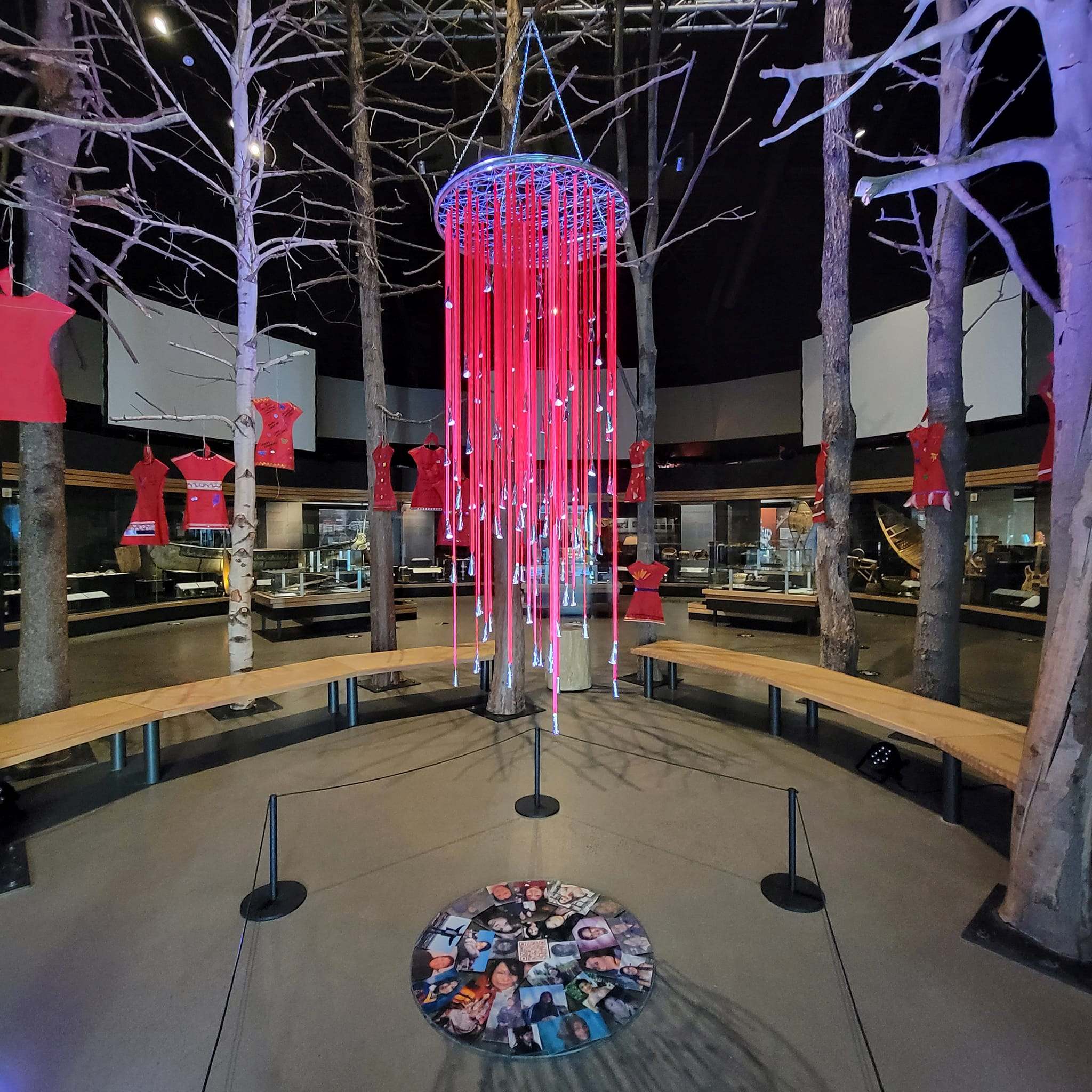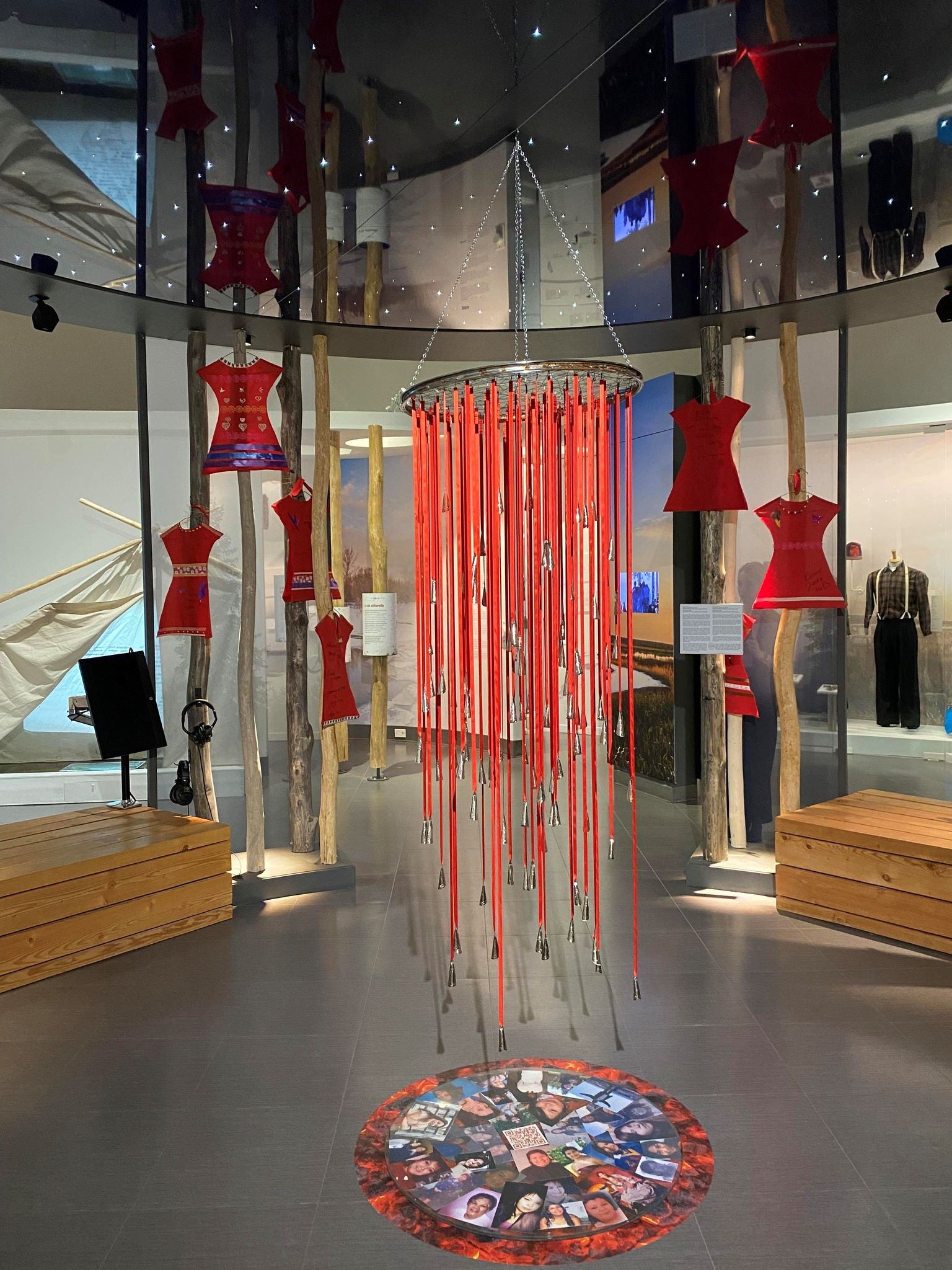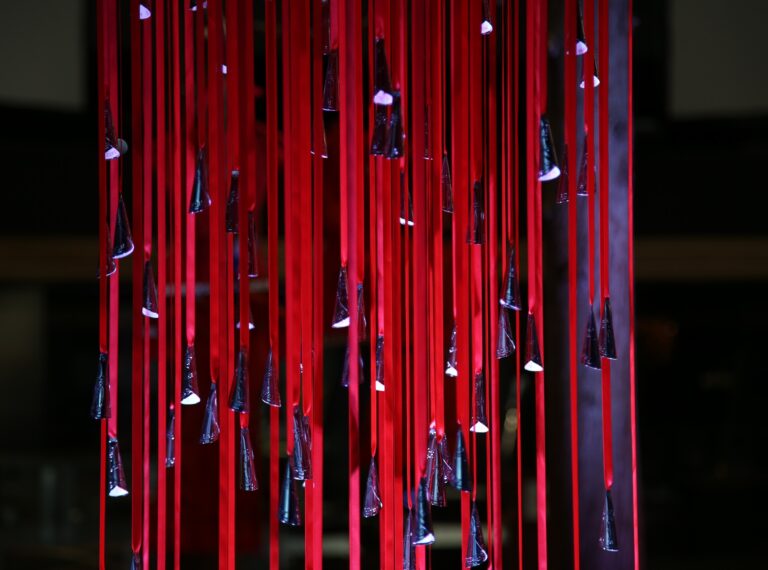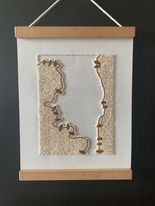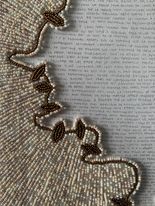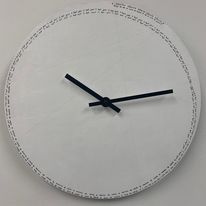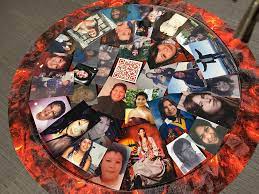Rosalie is a young woman from Pikogan. At a very young age, she already felt a great interest in art, without yet knowing exactly how it would bring her into contact with her culture and the teachings of her elders.
She completed high school with a focus on art and went on to Cégep in Montreal, again in art, before going on to University in Quebec City in Visual and Media Arts.
“No matter what direction I take, it will be guided by art.”
For her, all her academic learning was much easier through artistic creativity.
After her grandfather’s departure, Rosalie felt an urgent need to reconnect with her culture, and to receive whatever her kokom, Julie Mowatt, could pass on to her.
“Hearing my kokom talk about culture brings me back to my identity.”
And it’s from her stories that she feels inspired for artistic projects, which become much more symbolic and meaningful in her identity journey.
“I would find it sad if these memories were lost, since they (my family) are in them. And for me, it’s the form of oral transmission, having this time with my kokom, that moves me and allows me to document our history.”
Rosalie, whose father is Native and whose mother is a Quebecker, asks herself: where do I fit in? Do I have the right? In addition to her kokom transmissions, she researched and became interested in Native poetry, and this led her to the works of Naomi Fontaine, who became a source of inspiration for her.
Rosalie’s works become visually vibrant poetry with a strong cultural symbolism. Like the work she produced in response to an invitation from Quebec Native Women, a call for projects depicting the tragedy of missing and murdered women. For this introspective component and quest for information, she shared the knowledge of her kokom.
“It pushes me to want to learn more about my culture, the history of my family, my community.”
The piece in question was exhibited at the Hôtel-Musée Premières Nations in Wendake and is now on display at the Musée ilnu in Mashteuiatsh. It reveals a drop of red ribbons of various sizes, with bells attached to each end, the same bells found on the regalia of jingle dresses. Inside each of these bells is the name of a missing native woman.
During this creative process, Rosalie confides: “I had 98 bells in front of me, on the floor in a heap, with names of people, names of women inside who have had a life, who still have a life story despite their disappearance. It’s so much more concrete and moving than seeing names on a list!”
“It’s not ‘just’ a missing woman, she has a story that ended.”
Other works have followed and there will be many more to come, inspired by encounters with her kokom and with her community, who are very present to encourage and support her throughout her artistic and learning process.
Rosalie already stands out for her talent, humility and impressive maturity. She still has a lot to learn and explore, she says, but is very curious to see what the future holds.
Rosalie is one of our next generation of cultural ambassadors, and we’re proud of her.
Press:
L’Indice bohémien – May, 30 2023
Instagram post from Quebec Native Women – October, 4 2023
TVA Nouvelles – October, 4 2023



